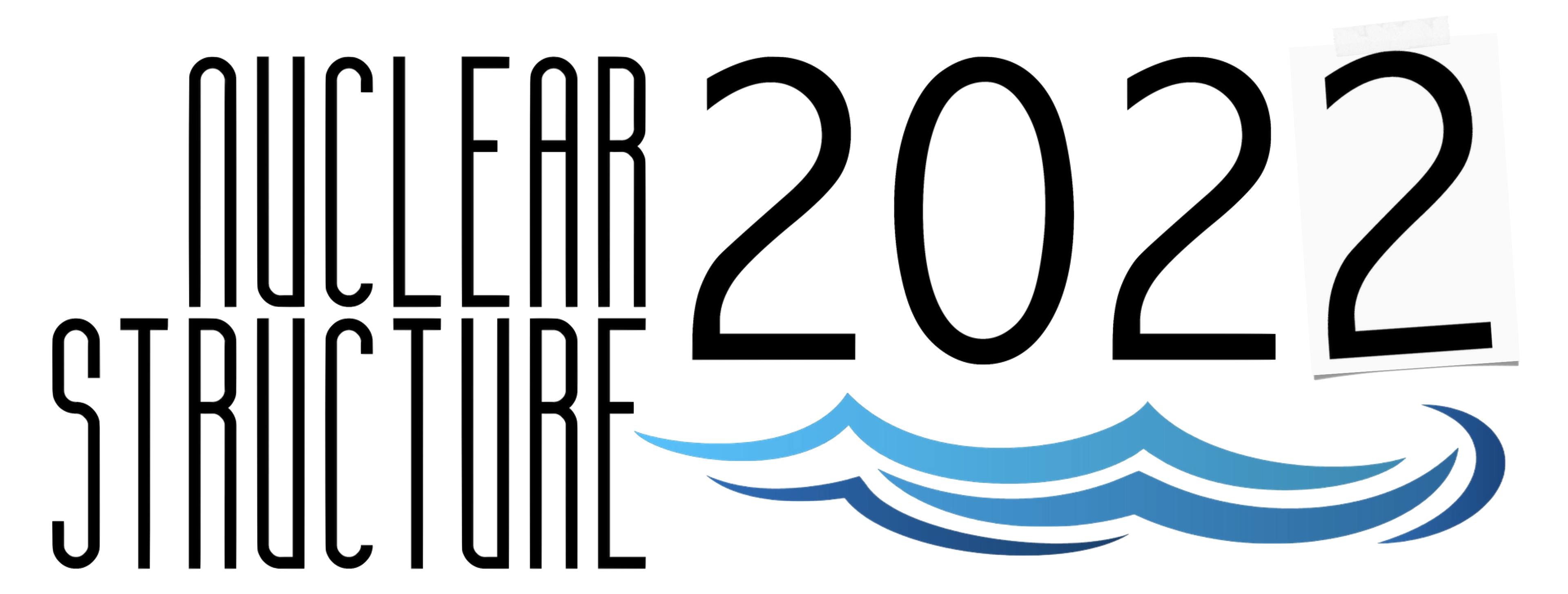Speaker
Description
Direct reactions represent a unique mechanism to investigate the nuclear-structure properties and the nature of single-particle states of nuclei along shell closures. In this contribution, the $^{46}$Ar($^3$He, d)$^{47}$K proton-transfer reaction is proposed for the study of properties of the ground state of the radioactive neutron-rich $^{46}$Ar isotope. The interest behind this isotope stems from the observed discrepancies between the well-established shell model with SDPF-U interaction and measurements of transition probability B(E2) between the ground state and the first excited state. The proton component of the wave function has been pointed out as the source of this discrepancy [1,2].
The measurement, performed at the SPIRAL 1 facility in GANIL, France with a post-accelerated radioactive 9 MeV/u $^{46}$Ar beam impinging on a high-density cryogenic $^3$He target [3], aimed at quantifying the transfer cross section to the 3/2$^+$ level relative to the 1/2$^+$ ground state in $^{47}$K. The experiment relied on a state-of-the-art experimental setup for a precise reconstruction of the kinematics of the reaction. The heavy reaction fragment was identified by the high acceptance magnetic spectrometer, VAMOS [4], while the high-granularity silicon DSSD detector, MUGAST [5], allowed the measurement of the angular distribution of the light ejectile while also performing particle identification. The AGATA gamma-ray tracking germanium array [6] measured the photons produced by the decay of the $^{47}$K excited states.
The experimental evidence indicates a substantially suppressed L=2 transfer to the first excited state of $^{47}$K, at odds with shell-model calculations that predict the s$_{1/2}$ and d$_{3/2}$ orbitals as almost degenerate and not entirely occupied. The results will be discussed in the framework of ab initio and mean-field calculations. In these theoretical results, the low occupancy of the s$_{1/2}$ orbital, in agreement with the high relative spectroscopic factor measured, implies a central depletion of the proton wavefunction. This work presents the first experimental evidence of this phenomenon in $^{46}$Ar.
[1] A. Gade et al., Phys. Rev. C 74, 034322 (2006)
[2] S. Calinescu et al., Phys. Rev. C 93, 044333 (2016)
[3] F. Galtarossa et al., Nucl. Inst. Meth. A 1018, 165830 (2021)
[4] M.Rejmund et al., Nucl. Inst. Meth. A 646, 184-191 (2012)
[5] M. Assié et al., Nucl. Inst. Meth. A 1014, 165743 (2021)
[6] S. Akkoyun et al., Nucl. Inst. Meth. A 668, 26-58 (2012)

